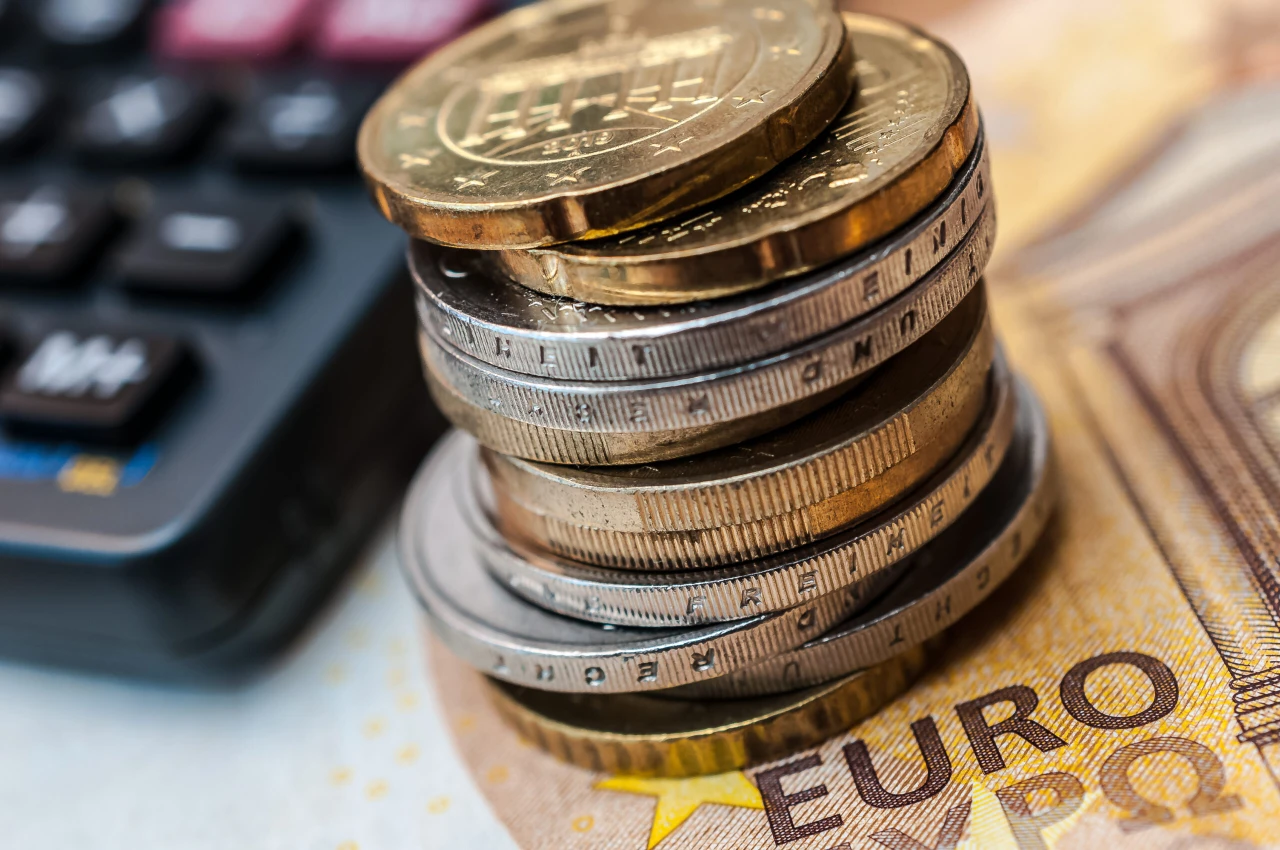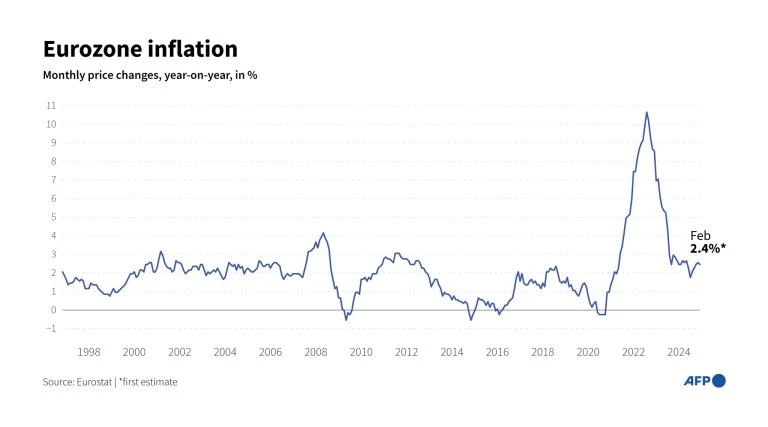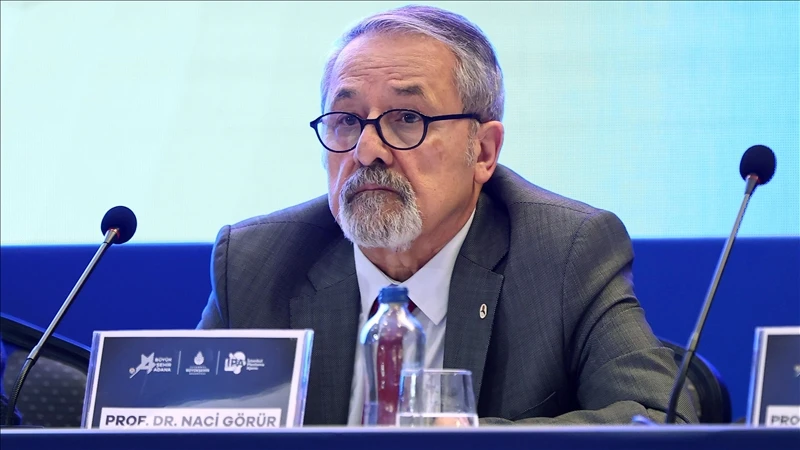Eurozone inflation fails to meet market expectations, falls slightly to 2.4%
 File photo shows a stack of euro coins placed on a euro banknote, accessed on Mar. 3, 2025. (Adobe Stock Photo)
File photo shows a stack of euro coins placed on a euro banknote, accessed on Mar. 3, 2025. (Adobe Stock Photo)
Annual inflation in Eurozone eased slightly to 2.4% in February, reversing a four-month upward trend, driven by a slowdown in energy price increases, according to the European Statistical Office (EuroStat) data released on Monday.
However, February’s rate was down from 2.5% in January, but it came in higher than the 2.3% predicted by analysts for financial data firm FactSet.
Inflation had reached 1.7% in September, its lowest level in three and a half years, but since October had climbed back above the European Central Bank’s (ECB) 2% target.
The data will support the ECB’s thinking that price pressures will ease this year as it prepares to cut interest rates again on Thursday.

Core inflation—which strips out volatile energy, food, alcohol and tobacco prices and is a key indicator for the ECB—also slowed to 2.6% in February, down from 2.7% in January, in line with experts’ expectation.
The ECB’s focus has turned from tackling inflation to boosting the 20-nation single currency area’s economy after sluggish growth in the past two years.
The eurozone economy grew by a mere 0.1% in the fourth quarter of last year.
Inflation has sharply fallen from the record peak of 10.6%, reached in October 2022 after Russia’s invasion of Ukraine sent energy prices soaring. But risks remain for Europe’s economy after U.S. President Donald Trump threatened the EU with higher tariffs and uncertainty over Ukraine’s future.
The outlook for the eurozone’s two biggest economies, Germany and France, appears gloomy for 2025, as the single currency area falls further behind the United States and China.
Rising food costs
The easing of inflation in February was mainly driven by energy costs, which rose 0.2% year-on-year, a significant slowdown from 1.9% in January. But food, alcohol and tobacco price rises accelerated to 2.7% in February, up from 2.3% in January.
Services sector inflation slowed to 3.7% last month, lower than the 3.9% recorded in January, Eurostat data showed.
Analysts said they expected inflation not to change significantly from current figures.
“We think that headline inflation will remain close to its current level for the next few quarters as energy inflation edges up and food inflation stays above 2%,” said Jack Allen-Reynolds, deputy chief eurozone economist at Capital Economics.
Consumer price rises in Germany and France greatly differed, according to the data.
France’s inflation slowed to 0.9% in February—the lowest in the eurozone—from 1.8% in January, while in Germany it remained stable at 2.8%.



